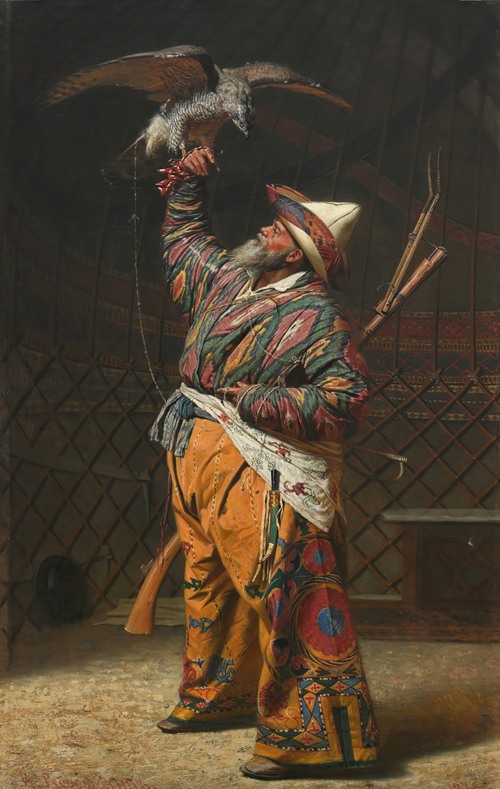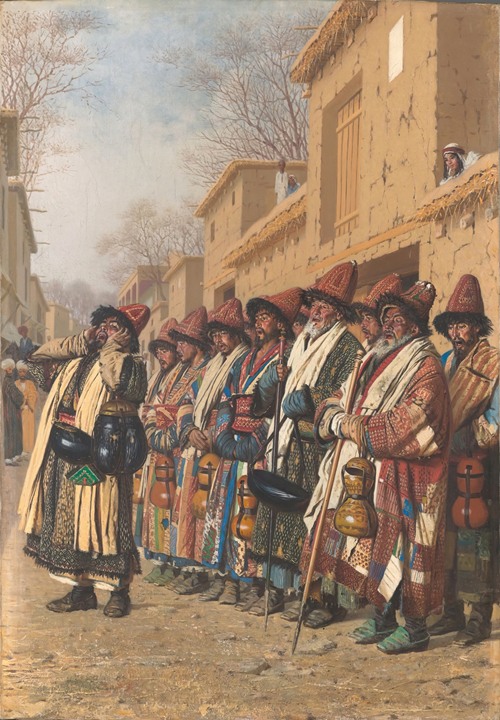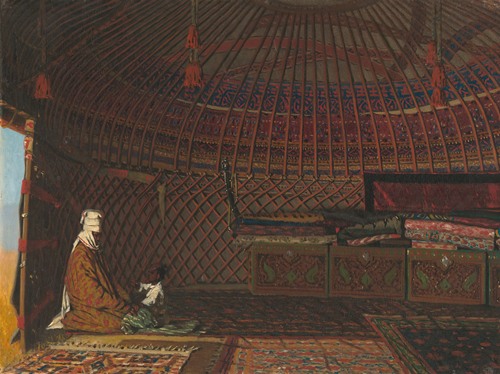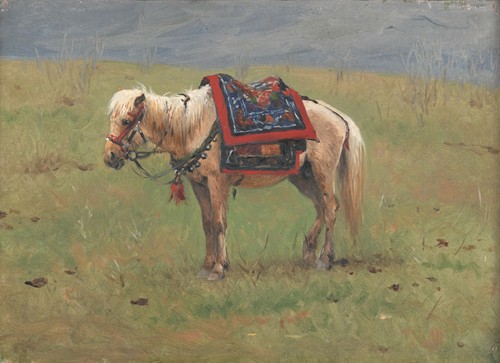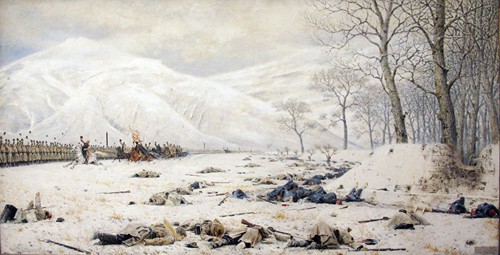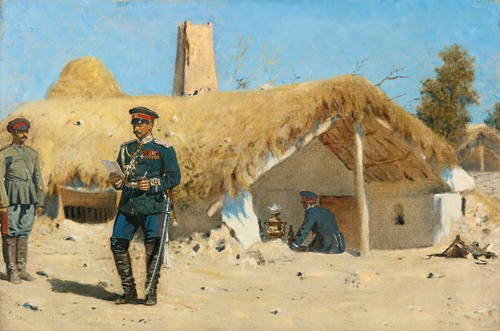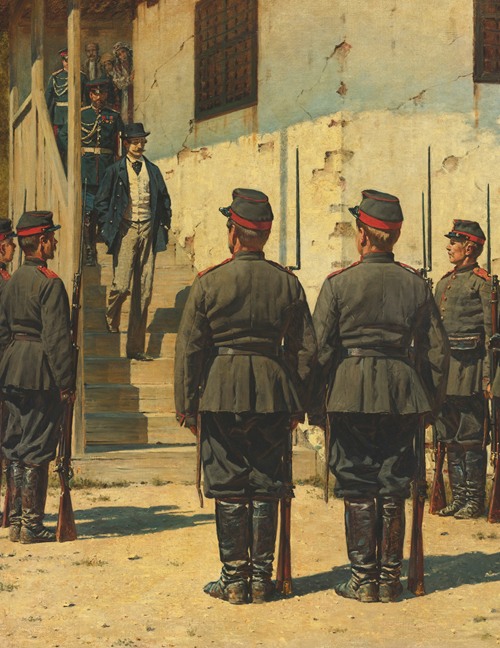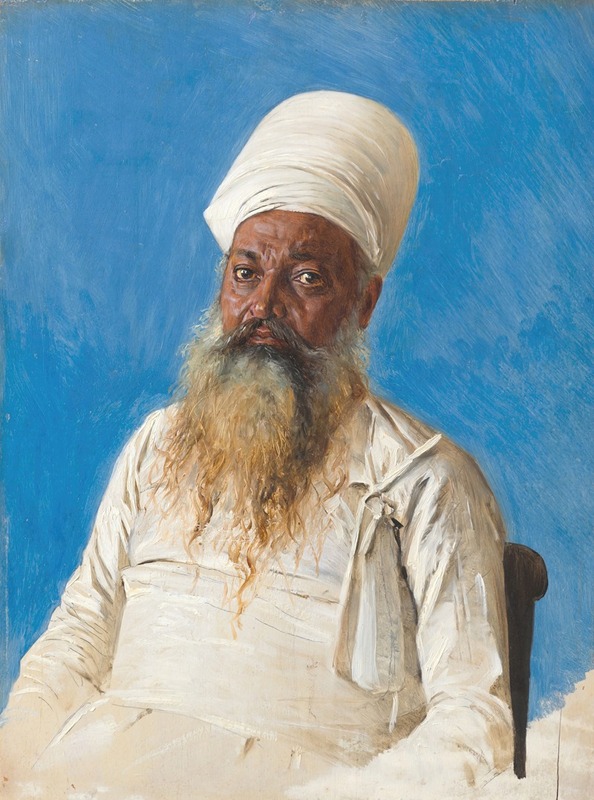
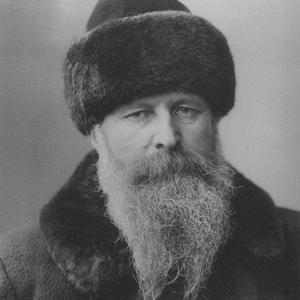
Vasily Vasilyevich Vereshchagin , was one of the most famous Russian war artists and one of the first Russian artists to be widely recognised abroad. The graphic nature of his realist scenes led to many of them never being printed or exhibited.
Vereshchagin was born at Cherepovets, Novgorod Governorate, Russia, in 1842 as the middle of three brothers. His father was a landowner of noble birth, while his mother was of common origin and had Tatar roots. When he was eight years old, he was sent to Tsarskoe Selo to enter the Alexander Cadet Corps. Three years later, he entered the Sea Cadet Corps at St Petersburg, making his first voyage in 1858. He served on the frigate Kamchatka, which sailed to Denmark, France and Egypt.
Vereshchagin graduated first in his list at the naval school, but left the service immediately to begin the study of drawing in earnest. Two years later, in 1863, he won a medal from the St Petersburg Academy for his Ulysses Slaying the Suitors. In 1864, he proceeded to Paris, where he studied under Jean-Léon Gérôme, though he dissented widely from his master's methods.
In the Paris Salon of 1866, Vereshchagin exhibited a drawing of Dukhobors chanting their Psalms. In the next year, he was invited to accompany General Konstantin Kaufman's expedition to Turkestan. He was granted the rank of ensign. His heroism at the siege of Samarkand from June 2–8, 1868 resulted an award of the Cross of St George (4th class). He was an indefatigable traveller, returning to St Petersburg in late 1868, to Paris in 1869, back to St Petersburg later in the year, and then back to Turkestan via Siberia at the end of 1869.
In 1871, Vereshchagin established an atelier in Munich. He gave a solo exhibition of his works (later referred to as his "Turkestan Series") at the Crystal Palace in London in 1873. He gave another exhibition of his works in St Petersburg in 1874, where two of his paintings, namely, The Apotheosis of War, dedicated "to all conquerors, past, present and to come," and Left Behind, the picture of a dying soldier deserted by his fellows, were denied a showing on the grounds that they portrayed the Russian military in a poor light.
In late 1874, Vereshchagin departed for an extensive tour of the Himalayas, India and Tibet, spending over two years in travel. He returned to Paris in late 1876.
After the war, Vereshchagin settled in Munich, where he produced his war pictures so rapidly that he was freely accused of employing assistants. The sensational subjects of his pictures, and their didactic aim, namely, the promotion of peace by a representation of the horrors of war, attracted a large section of the public not usually interested in art to the series of exhibitions of his pictures in Paris in 1881 and subsequently in London, Berlin, Dresden, Vienna and other cities.
Vereshchagin was in the Far East during the First Sino-Japanese War of 1894–1895, and was with the Russian troops in Manchuria during the Boxer Rebellion of 1900. In 1901, he visited the Philippines, in 1902 the United States and Cuba, and in 1903, Japan.
During the Russo-Japanese War, he was invited by Admiral Stepan Makarov to join him aboard Makarov's, Petropavlovsk. On April 13, 1904, Petropavlovsk struck two mines while returning to Port Arthur and sank, taking with it most of the crew, including both Admiral Makarov and Vereshchagin. Vereshchagin's last work, a picture of a council of war presided over by Admiral Makarov, was recovered almost undamaged.


